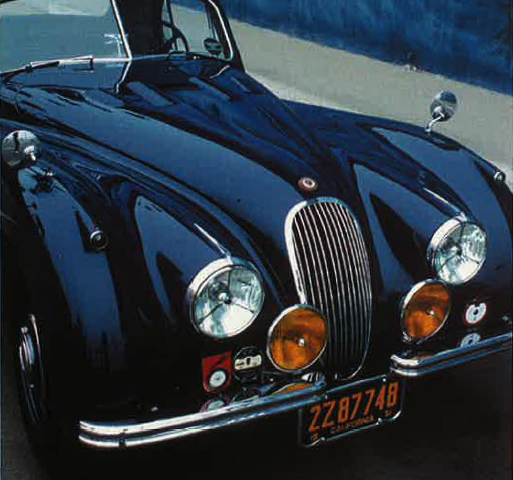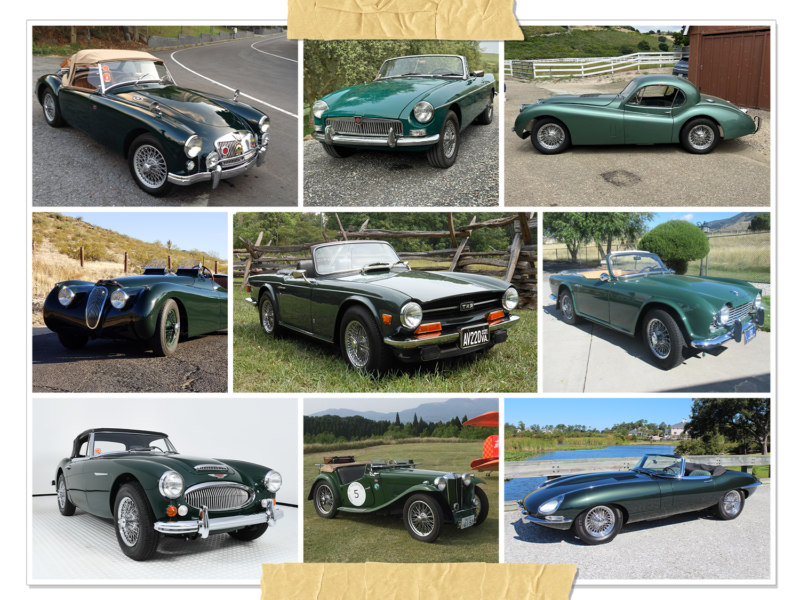Jaguar’s XK series wakes the post-war world
America’s love affair with the automobile is so well documented, it has become more than just a cliché—it has moved comfortably into the banal land of things that are taken for granted. Consumers are spoiled brats of industry to an extent, wanting to see a new car model before the fenders have taken shape. What if there was a period of time, say three-and-a-half years, where there wasn’t a need for new car salespeople, new car loans, or automotive advertising, because there weren’t any new cars? This is not the plot of a diabolical anti-automotive screenplay, but a period of time the world experienced during World War II.
About 16.3 million Americans served in the U.S. armed forces. After the war, their first wish was to go home. High among their other dreams was a new car. U.S. automakers were standing in line to help feed this demand, having spent the previous three years in the war goods business. In addition to the U.S. auto contingent, ally England was also primed to move the world with its new designs. Under the creative direction of William Lyons, Jaguar succeeded in making a move that would endear enthusiasts for a lifetime.
A Desire For More
Lyons had already made it through WWI when his life began to take shape. During his early years in the English midlands, Lyons gave little indication that he would grow up to create legendary sports cars. A motorcycle enthusiast who was fond of racing his Harley-Davidson, Lyons obtained an apprenticeship with Crossley Motors, a Manchester-based car builder. But at just 17 years old, he was not ready to tackle the machinist trade, so he returned home.
Things started to change when Lyons met William Walmsley, who moved into his neighborhood after WWI. Like Lyons, Walmsley had a passion for motorcycles. After purchasing a military surplus Triumph, he fitted it with a sidecar of his own design. Walmsley’s attractive and well-made sidecar offered a business opportunity that Lyons encouraged him to pursue. In time, the two men established the Swallow Sidecar Company.
The business eventually branched out from building sidecars to automobile bodies. Custom coachwork was very popular in Britain, and Swallow began to prosper by building bodies for the Austin Seven. In the ’30s, Lyons moved forward again, shifting Swallow to building entire motorcars. Lyons knew that he couldn’t base his business solely on sports cars, so he was very careful to build his line around sedans. However, he always seemed to have a special love for two-seaters. The company’s SS 90 soon gave way to the SS 100, one of the best all around sporting machines of the mid- to late-’30s.
From 1939 until the late ’40s, WWII put a huge dent in the progress of the British auto industry and cost Lyons his company’s good name. “SS,” as his company had come to be known (Swallow Sidecars), had taken on a horrible connotation because of its Nazi association, so the company adopted the Jaguar name that it had first used on a mid-’30s sedan.
Postwar Pickup
By 1948, Lyons was ready to kick his company into a higher gear. The end of the war unleashed pent-up demand both in Britain and the United States. Lyons wanted to be part of the next trend or, even better, he wanted to create it. To do this, he planned to make a bold statement at the 1948 Earls Court Motor Show. Lyons had his engineering team, under the guidance of chief engineer William Heynes, design a modern line of sedans that would have some longevity in the post-war marketplace. The accomplished team came up with a new chassis, complete with a very modern (for the day) torsion-bar independent front suspension, and an all-new dual-overhead cam six-cylinder engine. Jaguar Cars Ltd. was ready to go to show. Earls Court was the target, and if public reception to the show vehicle warranted it, Lyons projected a limited production run for the vehicle, perhaps 100 or 200 editions.
With this preliminary plan in place and time wasting, Lyons set his craftsmen to work. The sedan chassis was shortened to accept a “swoopy” two-seat roadster body whose shape, legend has it, came together in a period of just two weeks. True or not, there is no doubt that the body shape was advanced for its time and built in very short order.
Behold the XK
Housed within the graceful body was the XK engine, the stature of which would eventually reach epic proportions before it was finally put to pasture after 40 years of production. In an era when many production cars still offered flathead engines, Heynes and his staff put together a dual-overhead cam engine with hemispherical combustion chambers, not as a special “racing” powerplant, but for everyday use in sedans. With chain-driven camshafts operating huge intake and exhaust valves, it was an ingenious achievement.
The XK engine spun 160 horsepower from a displacement of 3.4 liters (210 cubic inches). Peak horsepower occurred at 5000 rpm, while peak torque of 195 pound-feet arrived at 2500. Not only did the engine offer terrific high-speed potential (the car was dubbed XK 120 because of its 120-mph capability), it was also wonderfully tractable around town in top (fourth) gear. Needless to say, the XK120 show car was a sensation at Earls Court, and orders poured in so rapidly that Jaguar was obliged to re-engineer the body from hand-formed aluminum over ash to all-steel construction.
The XK140
Launched at the 1954 Motor show, the XK140 was very much an evolution of the XK120. This new iteration introduced new, more practical features, including rack and pinion steering. Telescopic dampers replaced the outdated lever arm dampers. The engine and bulkhead were moved forward three inches compared to the earlier cars, and the extra space used to fit occasional—and very small—rear seats. The roadster did not have the extra seats. The exterior changed little from the 120, except for the fitting of much heavier bumpers, similar to those on the large MK VII.
The XK150
By 1957 the XK design was looking a little old-fashioned, and Jaguar had set new standards with the introduction of the Jaguar Mk 1 the previous year. Although the XK didn’t grab much attention at the time, it is now recognized among enthusiasts for its refinement.
The car’s appearance was updated with a one-piece curved windshield and a larger rear window (on the FHC). The wraparound window look was popular at the time. The curvature from front to rear fender was straightened, resulting in a portly look, and the roadster model was fitted for the first time with pushbutton external door handles and wind-up windows.
Servo-assist disc brakes were fitted and new and more powerful engine options were released. The roadster’s firewall was moved back four inches, resulting in a longer hood and fenders. As with the previous XKs, standard (steel wheel) and special equipment models were available. By the time the XK150 stopped production, Jaguar had substantially shaken the market and readied the world for further advancements. As a sports car for the street, it created an entirely new market, particularly in the United States, where its success gave birth to the Chevrolet Corvette, and in Britain it was the precursor to many fabled Jaguar sports cars, including the D- and E-Types.











'The Big Engine that Could' has no comments
Be the first to comment this post!